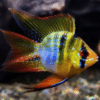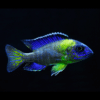To provide the best experiences, we use technologies like cookies to store and/or access device information. Consenting to these technologies will allow us to process data such as browsing behaviour or unique IDs on this site. Not consenting or withdrawing consent, may adversely affect certain features and functions.
The technical storage or access is strictly necessary for the legitimate purpose of enabling the use of a specific service explicitly requested by the subscriber or user, or for the sole purpose of carrying out the transmission of a communication over an electronic communications network.
The technical storage or access is necessary for the legitimate purpose of storing preferences that are not requested by the subscriber or user.
The technical storage or access that is used exclusively for statistical purposes.
The technical storage or access that is used exclusively for anonymous statistical purposes. Without a subpoena, voluntary compliance on the part of your Internet Service Provider, or additional records from a third party, information stored or retrieved for this purpose alone cannot usually be used to identify you.
The technical storage or access is required to create user profiles to send advertising, or to track the user on a website or across several websites for similar marketing purposes.
Red Devil Vampire Crab - Geosesarma Hagen - Decapod Crustacean 4 × £8.71


 Red Devil Vampire Crab - Geosesarma Hagen - Decapod Crustacean
Red Devil Vampire Crab - Geosesarma Hagen - Decapod Crustacean 










Emily Carter (verified owner) –
I recently added the Red Top Aristochromis Cichlid to my Lake Malawi setup, and I couldn’t be happier! This vibrant fish has brought so much life to my aquarium. I’ve been keeping fish for over five years now, and this particular cichlid species stands out with its brilliant red and blue coloration. In just three weeks, it has adjusted beautifully to its environment, showing no signs of stress, which speaks volumes about its resilience and healthiness right from the start. I did a bit of research before purchasing and found that the Red Top is less aggressive than some other cichlids, making it perfect for my mixed community tank. It’s playful and curious, often exploring every nook and cranny of the tank. My only minor concern was the initial shipping; while it arrived on time, the packaging could’ve been a bit more secure. However, all in all, this fish has exceeded my expectations in terms of beauty and behavior! I highly recommend it to both novice and experienced aquarists looking to enhance their aquarium fish collection with a stunning Lake Malawi cichlid. You won’t regret it!